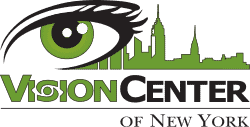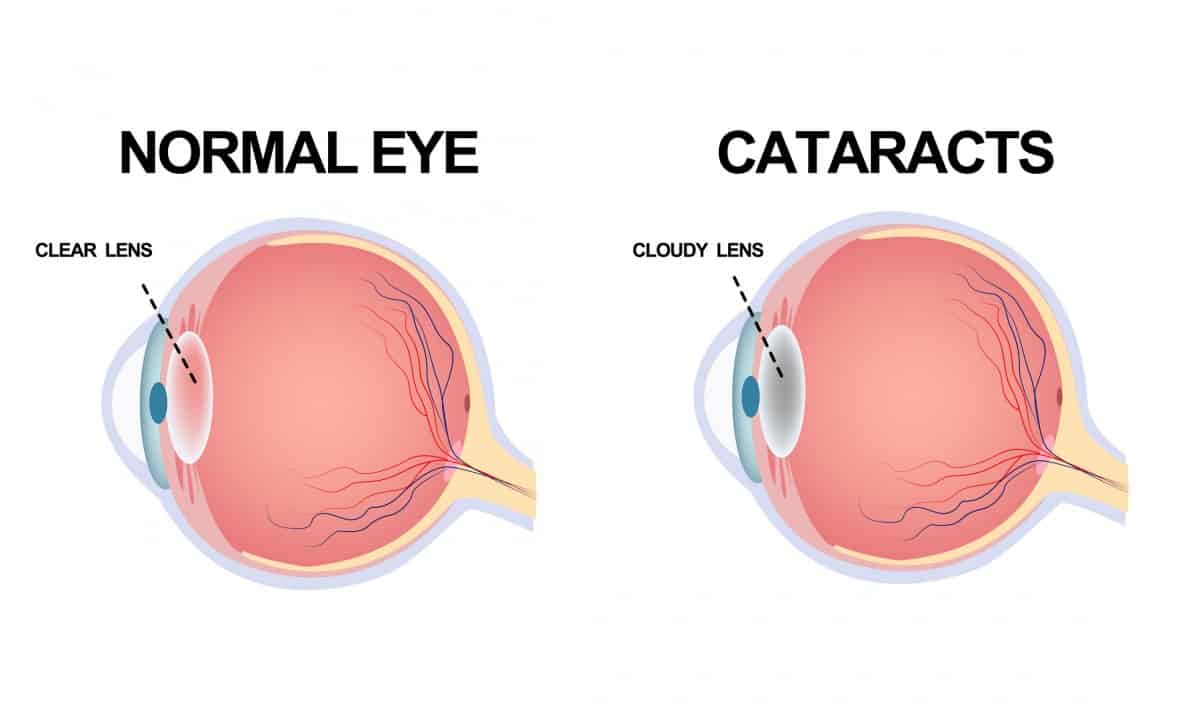A staggering 25 million people over the age of 40 will develop cataracts in the US this year. When you look at the statistics for people over the age of 75, this number rises to nearly 50%.
Unfortunately, cataracts appear to be unavoidable for most of these people, as they appear to be a natural part of the aging process, but they can also happen as a side effect of other conditions injuries and even surgery Experts recommend you contact your physician if you’re losing your color vision or your vision becomes blurry.
In this article we will provide details on the three different cataract types, we’ll discuss cataract surgery, cataract treatment, and the different cures for cataracts.
The good news because of advances in medical technology in recent decades cataract treatment is quick and safe so if you want to discuss your different cataract treatment are surgery options contact your eye specialist today.
The Different Types of Cataracts
As you get older, proteins will build up in the lens of your eye causing the cloud and they describe these as cataracts. For many people, the early symptoms of cataracts may be barely perceptible, because they are slow-moving processes. Getting a regular eye exam will help you identify whether you’re developing cataracts.
Cataracts are a clouding of the lens in the eye. It results from the normal aging process and comes from a build-up of protein on the eye lens. Some symptoms of cataracts can vary depending on which type you develop having said that there are symptoms each type shares that these include:
- Difficulty reading
- Blurred vision
- Double vision
- Seeing halos
- Night vision changes and loss of depth perception
- Increase in light sensitivity to the stage where your eyesight is affected Increased difficulty in distinguishing colors
When discussing cataracts your genetic concerned with three different types;
- Nuclear sclerotic
- Cortical
- Posterior subcapsular
Most of these will share the common symptoms listed above but they’ll also have their own unique set of symptoms which will be discussed later in the article.
Nuclear Sclerotic Cataracts
These are by far the most common form of cataract beginning in the eyes nucleus are at the center a nuclear sclerotic cataract progresses at a slow pace taking years to develop. The process begins with a yellowing and gradual hardening of the eyes nucleus that will spread to the outer layers of the eye as it progresses.
One of the unique symptoms of this type of cataract is that it creates what’s called second sight as it progresses. People suffering from this cataract will regularly get a vast improvement in their near-site vision. However, this improvement in their vision is temporary and it will gradually become much worse as the nuclear sclerotic cataract continues to progress.
Cortical Cataracts
While not primarily linked to diabetes sufferers of this disease are at much higher risk of developing cortical cataracts. These progress in the opposite fashion to a nuclear sclerotic cataract as the changes to the eye start at the outermost layer. The cataract develops spokes and these grow from the outside of you the eyes lens gradually towards its nucleus. Some symptoms of this include changes in your depth perception and contrast extreme sensitivity to glare and blurred vision.
Posterior Subcapsular Cataracts
People who already suffer from extreme nearsightedness are at an elevated risk of developing this type of cataract. It also links them to the recreational and medicinal use of steroids. One symptom of posterior subcapsular cataracts is a noticeable change in night vision capabilities. Some people will notice an increased difficulty in reading. Unfortunately, this is the fastest developing cataract and instead of taking years to develop progress can happen in a matter of months.
Understanding How Cataracts Impact the Eye and Its Functions
As we touched on the previous experts agree cataracts are just a normal phase of the aging process however, there are some risk factors that can snowball your probability of developing cataracts
Here are some risk factors most commonly associated with developing cataracts some are outside of your control but others is you can limit these medications and change your lifestyle.
The following behaviors and diseases increase your risk of developing cataracts;
- Obesity
- Hypertension
- Smoking
- Prolonged exposure to the sun
- Diabetes
- Excess alcohol consumption
Surgery and Medicines that have been linked to Cataracts;
- Prolonged exposure to corticosteroid medication
- Cholesterol reducing
- Statin medicine
- Eye injuries or inflammation
- Previous eye surgeries HRT (Hormone replacement therapy)
Unavoidable risk factors;
- Nearsightedness
- A history of eye surgery
- Old eye injuries
- A family history
Experts believe that oxidative changes in your eyes lens cause a protein buildup that results in the development of cataracts.
How your eyes operate
If you’ve ever seen a camera and you have a basic understanding of how it works, your eyes function very similarly. Both have a lens that’s designed to focus light as a lens does its job this light hits a retina in the eye which just your eye’s focus. Your retina then creates neurological impulses which are a conversion of what it sees and these are transferred to your brain to the optic nerve creating an image or images.
Your eye’s lens is a combination of water and protein, with a complex structure of the relationship is a fine balance, and both the water and protein work together to filter the light to determine what you see. Unfortunately, the proteins can shift locations and aggregate as we get older, resulting in cataracts with cloudy vision.
Tips for Cataract Prevention
You should focus on prevention rather than cure, so here are several that’ll help you either delay your development of cataracts are reduce your risk of getting them all together
Change your diet
If the focus of your diet is healthy packed with antioxidants, these have been directly linked to the prevention of cataract development. One specific survey showed that diets with an elevated level of Vitamin E and Vitamin C mitigate against the risk of cataract development. While many of these studies are ongoing and it says yet uncertain whether specific vitamins can completely prevent cataracts, we always recommend that you contact your physician before considering any supplementation
Protect your eyes
One of the most common causes of cataracts and one that’s easily preventable is the overexposure of your eyes to ultraviolet light. Purchasing and wearing a high-quality pair of sunglasses would quickly help block these harmful rays.
Change your lifestyle
All three different cataracts are directly linked to issues associated with people’s lifestyle smoking, and obesity has been directly linked to the development of cataracts. Obviously, if you sell if you stop smoking today you will mushroom many aspects of your health obesity is also linked to hypertension and diabetes which are other severe risk factors in the development of cataracts so changing your diet and exercising more often should help.
The most effective Cataract Treatments
If you exhibit any of the symptoms, we listed previously from cataracts, the obvious course of action is to make an appointment with an eye doctor. You will need expert intervention to determine whether you are developing cataracts. Following a successful diagnosis, they can give you a course of treatment that may include visual aids, stronger glasses, and even bifocals to help temporarily improve your vision.
Your eye doctor will continue to track your cataract’s progress and when the time comes that you need surgery to correct your vision, they will be at hand to recommend it. Remember that despite the fine cataracts are just another natural part of aging surgery is a realistic possibility of correcting the problem and you don’t have to continue to suffer unless you choose to.
A successful Cataract Surgery
Successful surgeries to correct cataracts will involve your cloudy lens being removed, and it is replaced with what’s called an IOL, which is a clear plastic intraocular lens. This method listed above is the most common, talk to your specialist and you can explore some more replacement lens options.
Most cataract surgery is done through microsurgery in outpatient clinics. It can be done in a matter of minutes with no stitches required. Following surgery, you can return home and within a few days, you’ll be able to resume normal activities.
Will I need to continue to wear glasses?
Unless you specifically ask for corruptive IOLs, you will need to wear reading glasses post-surgery. In some cases, you may need to wear glasses described or progressive lenses to correct some mild refractive errors post-surgery.
Post-surgical care of your eyes is vital and protecting them by wearing sunglasses and adding an artery reflective coating to your existing glasses will help.
Cataract surgery and cataract treatment couldn’t be easier, regardless of the cause or type of cataracts you’re suffering from.
I suspect I have Cataracts, what should I do?
Cataracts are easily diagnosed and nearly as easy to treat. Our goal is to provide the highest quality of care in our friendly, warm, and state-of-the-art eye care center. Our experienced eye-care staff is committed to using the most advanced technology and surgical techniques to preserve and restore your vision.
Don’t continue to stress or suffer, there is a cure for cataracts, contact cataract specialists, Dr. Gary Fishman or Dr. Simon Wu at Vision Center of New York today and schedule an appointment.

